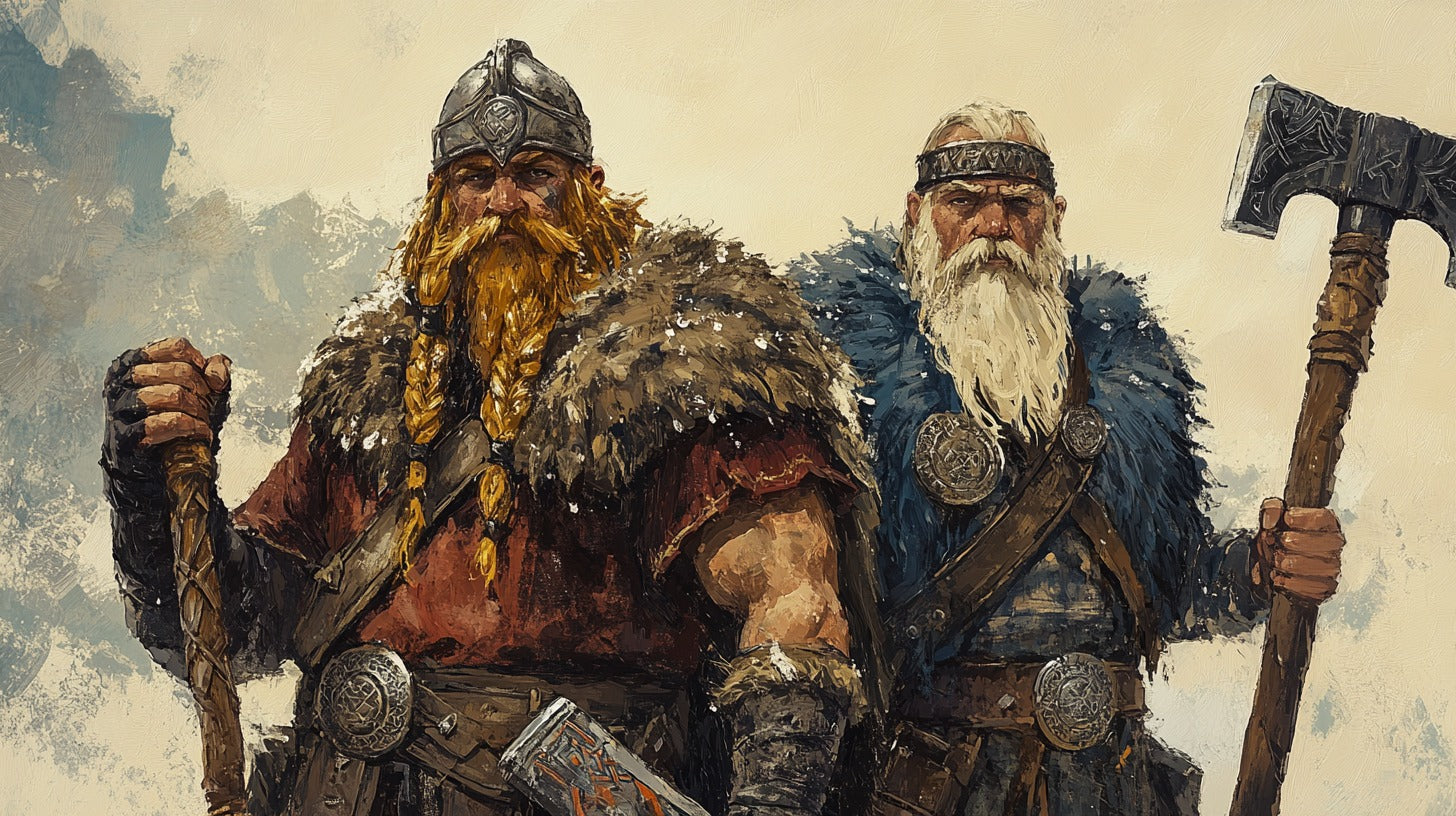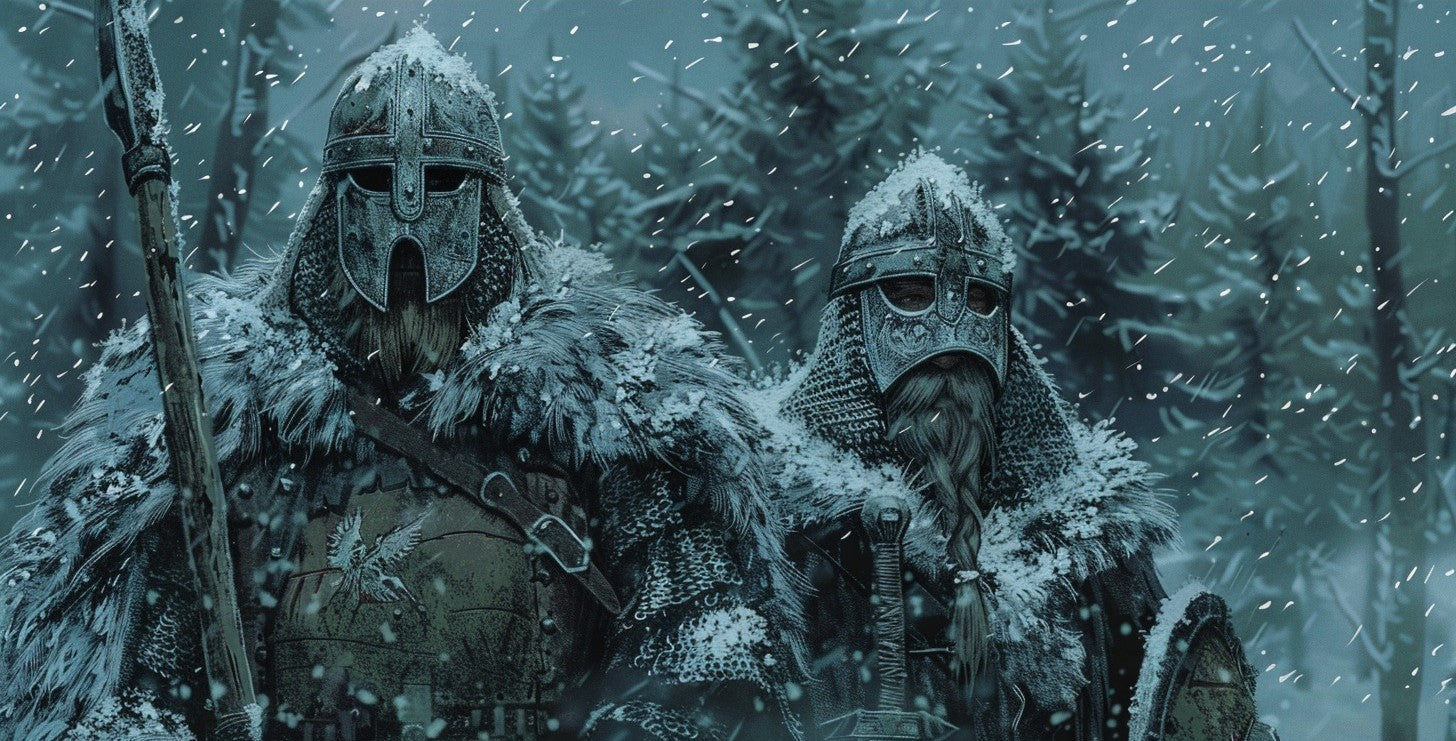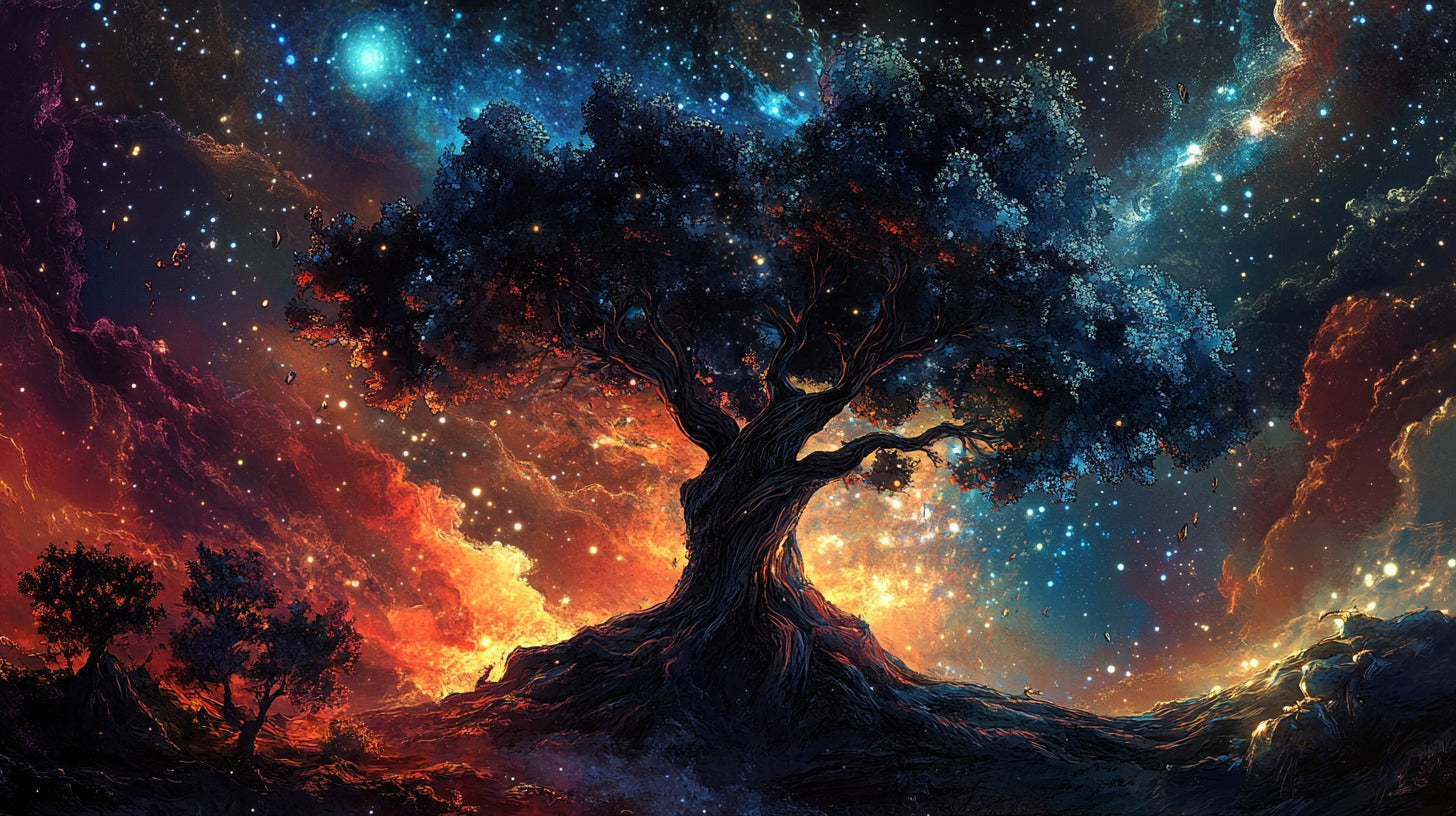
Thor and Perun: Lightning-Wielding Gods of Norse and Slavic Pantheons
In the vast tapestry of world mythology, certain threads seem to weave together, connecting distant cultures through strikingly similar divine figures. Among these, few parallels are as compelling as those between Thor, the thunder god of Norse mythology, and Perun, his Slavic counterpart. These mighty deities, separated by geography yet united in their celestial domains, offer a fascinating glimpse into the shared roots of European mythological traditions.
Origins and Cultural Context

Norse Slavic Perun Mjölnir Amulet
Thor in Norse Mythology
In the cold, fjord-carved lands of Scandinavia, Thor stood as one of the most beloved and powerful gods in the Norse pantheon. Son of Odin and defender of Asgard, Thor's name echoed through longhouses and across windswept plains. With his red beard and mighty muscles, he embodied the fierce yet protective spirit of the Norse people.
Perun in Slavic Folklore
Far to the east, among the dense forests and rolling steppes of the Slavic lands, Perun reigned supreme in the hearts and minds of the people. As the highest god in the Slavic pantheon, Perun's authority stretched from the Baltic to the Black Sea. His visage, often depicted as a robust man with a copper beard, instilled both awe and reverence in his worshippers.
Divine Domains and Responsibilities

Bronze Perun pendant dating back to the 12th Century, now located in the Cherdynsky Museum of Local Lore / Photo: Cherydyn Local History Museum
Masters of Thunder and Lightning
Both Thor and Perun ruled over the tempestuous realms of thunder, lightning, storms, rain, and wind. When storm clouds gathered and lightning split the sky, it was these gods who rode forth in their chariots, bringing both terror and life-giving rain to the lands below.
Protectors of Humankind
Beyond their meteorological duties, Thor and Perun shared a crucial role as protectors of humanity. They stood as bulwarks against the forces of chaos and destruction, safeguarding the realms of gods and mortals alike. In times of trouble, it was to these mighty deities that people turned for strength and protection.
Symbolic Weapons and Attributes

Thor's Hammer: Mjölnir
The weapon most closely associated with Thor is his hammer, Mjölnir. This magical tool, forged by dwarven craftsmen, could level mountains and always returned to Thor's hand after being thrown. More than just a weapon, Mjölnir was a symbol of Thor's power and his role as a protector.
Perun's Axe and Arrows
Perun, like his Norse counterpart, wielded powerful weapons associated with his storm god nature. His golden axe, hurled from the heavens, was said to be the source of lightning. Additionally, Perun was often depicted with a bow, shooting arrows of lightning across the sky.
Mythological Family Trees

Thor's Lineage
In Norse mythology, Thor's family connections were well-defined. He was the son of Odin, the Allfather, and the earth goddess Jörð. His wife was Sif, known for her golden hair, and he had several children, including Móði and Þrúðr.
Perun's Divine Relations
Perun's family tree is less clearly delineated in surviving Slavic myths, but he was often considered the head of the pantheon. In some traditions, he was married to Perunika, a goddess associated with fertility and nature.
Battles Against Cosmic Enemies

Thor vs. Jörmungandr
One of Thor's most famous mythological conflicts was with Jörmungandr, the Midgard Serpent. This monstrous creature, so large it encircled the world, was destined to be Thor's nemesis at Ragnarök, the twilight of the gods.
Perun vs. Veles
Similarly, Perun's great adversary was Veles, a chthonic god associated with the underworld, waters, and wilderness. Their eternal conflict, with Perun pursuing Veles through the heavens, was seen as the source of storms and a representation of the cycle of seasons.
Sacred Trees and Places of Worship

Thor's Oak
In Germanic lands, the oak tree was sacred to Thor. The Donar Oak, also known as Jupiter's Oak, was a famous shrine to Thor/Donar in what is now Germany, until it was felled by Christian missionaries in the 8th century.
Perun's Oak
Remarkably, the oak held similar significance for Perun worshippers. Sacred groves of oak trees were common sites of worship for Slavic peoples, with the oak seen as Perun's sacred tree. The parallel here is striking, pointing to shared Indo-European roots.
Influence on Human Affairs

Drawings of Slavic axe pendants from archaeological findings dating between the 11th - 12th century / Photo: VoivodeZmey
Thor's Role in Norse Society
Thor's influence extended deep into Norse society. He was the patron of warriors and farmers alike, invoked for protection, strength, and bountiful harvests. Amulets in the shape of Thor's hammer were widely worn as symbols of protection and Norse identity.
Perun's Importance to Slavic Tribes
Perun held a similarly central role in Slavic cultures. He was the god of war and weapons, but also of agriculture and law. Oaths were sworn by his name, and his symbols were used to seal treaties. The parallels with Thor's societal role are clear and compelling.
Survival in Folklore and Modern Culture

Neopagan idol of Perun, Bitsa Park, Moscow / Photo: Mike like0709, CC BY-SA 4.0
Thor in Contemporary Media
Thor has experienced a remarkable resurgence in popular culture, largely thanks to his portrayal in Marvel comics and films. While often diverging from his mythological roots, these modern interpretations have brought renewed interest in Norse mythology.
Perun in Modern Slavic Identity
While less globally recognized than Thor, Perun remains an important figure in modern Slavic neopaganism and cultural identity. His name and symbols are invoked in various contexts, from literature to music, as a connection to Slavic heritage.
Comparative Analysis: Striking Similarities

The parallels between Thor and Perun are too numerous and specific to be mere coincidence. Both are thunder gods, wielders of mighty weapons, protectors of humanity, and central figures in their respective pantheons. They share sacred symbols, like the oak tree, and play similar roles in their cultures' worldviews.
These similarities extend even to the details of their myths. Both gods ride in chariots across the sky, creating thunder. Both are associated with fertility and agriculture, despite their warrior aspects. And both stand as guardians against cosmic forces of chaos, embodied by their serpentine adversaries.
The Indo-European Connection
The remarkable similarities between Thor and Perun point to a shared origin in Proto-Indo-European mythology. This ancestral belief system, predating the split of Indo-European peoples, likely included a thunder god figure from which both Thor and Perun evolved.
This connection isn't limited to Norse and Slavic traditions. We see echoes of this thunder god in other Indo-European mythologies: Zeus in Greek myth, Jupiter in Roman, Indra in Vedic tradition. Each culture shaped this primordial deity according to its own needs and worldview, but the core attributes remain strikingly consistent.
Conclusion
Thor and Perun, these mighty gods of thunder, stand as testament to the deep connections between seemingly disparate European mythologies. Their similarities illuminate not just shared cultural roots, but also the universal human tendency to seek meaning in the awesome power of nature.
As we compare these gods, we're not just engaging in an academic exercise. We're touching on fundamental aspects of human belief and identity. The enduring appeal of Thor and Perun, whether in ancient worship or modern reinterpretations, speaks to our ongoing fascination with the raw power of nature and our need for protective, heroic figures.
In the end, Thor and Perun are more than just mythological curiosities. They are windows into the souls of the cultures that revered them, and mirrors reflecting our own enduring awe at the power of the storm. In their lightning-etched visages, we see not just the past, but echoes of our present and whispers of our future.
FAQs
- Were Thor and Perun ever worshipped together?
There's no evidence of joint worship, but there were regions where Norse and Slavic cultures intersected, potentially leading to some cultural exchange.
- How did Christianity affect the worship of Thor and Perun?
The spread of Christianity led to the suppression of both Thor and Perun worship, though elements of both gods were sometimes incorporated into Christian saints or folklore.
- Are there female equivalents to Thor and Perun in Norse and Slavic mythologies?
While not exact equivalents, both mythologies had powerful goddesses. In Norse myth, Freyja had some storm associations, while in Slavic myth, Mokosh was a major goddess, though not specifically of thunder.
- How do Thor and Perun compare to thunder gods from other cultures, like Zeus or Indra?
There are notable similarities among all Indo-European thunder gods, including their association with sky, storm, and warrior aspects. However, each god also has unique characteristics shaped by their specific culture.
- Are Thor and Perun still worshipped today?
While not widespread, there are modern neopagan movements that honor Thor, Perun, and other ancient gods. However, this modern worship often differs significantly from ancient practices.
References
"Perun pedant" by Фотосессия в Чердынском краеведческом музее. Украшение с изображением Перуна. Поступило в 1940 г. is licensed under CC BY-SA 4.0.
"<div class='fn'> LANCUM- : Early Medieval silver pendant 'Mjolnir'</div>" by The Portable Antiquities Scheme, Dot Boughton, 2008-03-06 11:18:01 is licensed under CC BY-SA 2.0.
"Perun in Bitca" by Mike like0708 is licensed under CC BY-SA 4.0.








